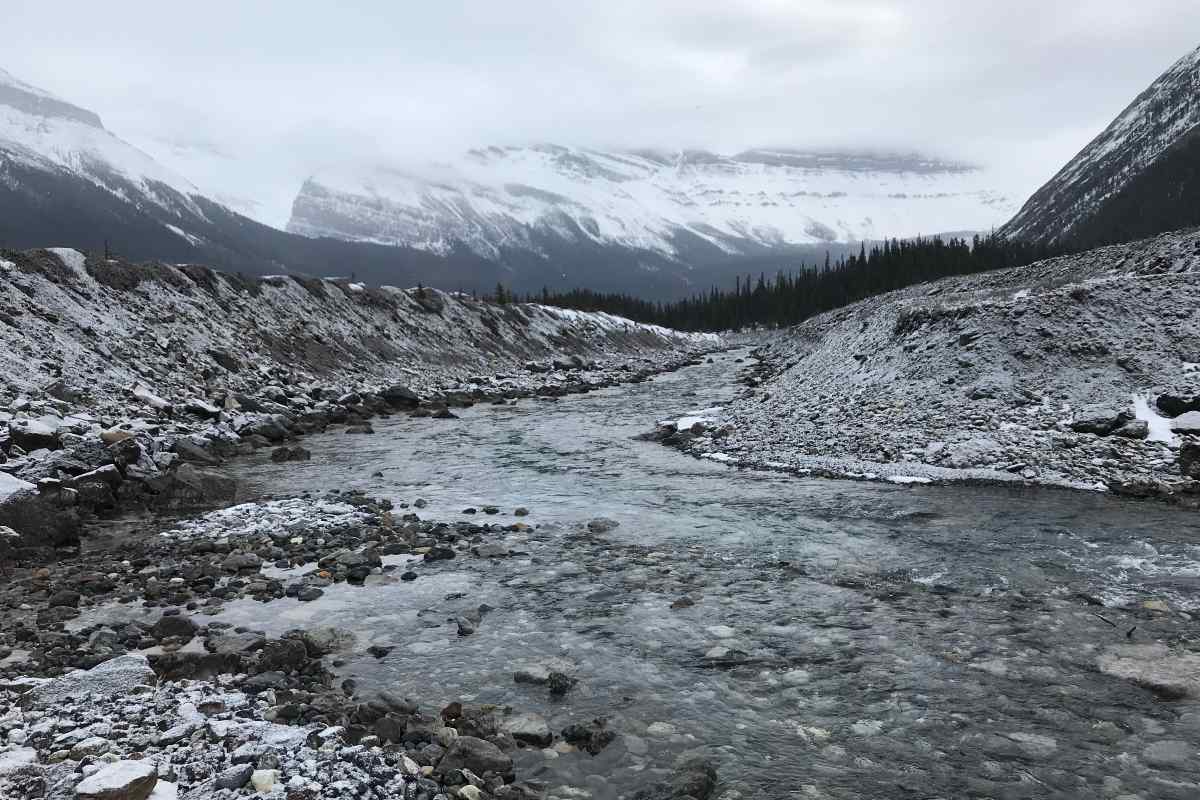
A new project is exmaining the effects of melting glaciers on drinking water in Western Canada. Photo credit: Jessica Serbu
"We are examining water quality, contaminants, productivity, and food webs—including micro-organisms all the way up to fish—to look for biological indicators that tell us about different aspects of water quality over time," says Rolf Vinebrooke (biological sciences), investigator on the project.
The research team, including Maya Bhatia (earth and atmospheric sciences), Vincent St. Louis (biological sciences), and Suzanne Tank (biological sciences), has established 14 sampling stations from the Columbia icefields into three main watersheds in Alberta: the Bow River, the Athabasca River, and the North Saskatchewan River, which provide drinking water for Calgary and area, Northern Alberta, and Edmonton.
St. Louis described an example of one of the effects of glacial melt on water chemistry: chemicals that are no longer in use could resurface as the glaciers melt. "DDT that was used back in the 1950s has been deposited in these glaciers and locked in the ice," he says. "Now that they're melting, there is the potential that DDT will be released into the drinking water."
The results of the project will have a vast array of implications, including ones for drinking water treatment, ecosystem management, and global climate change models. Future work will include collaboration with local Indigenous communities.
This project is part of the Canadian Mountain Network (CMN), hosted by the University of Alberta, which was named a Networks of Centres of Excellence (NCE) in 2019. The Faculty of Science is the only faculty in Canada that is home to two NCEs—CMN and GlycoNet.